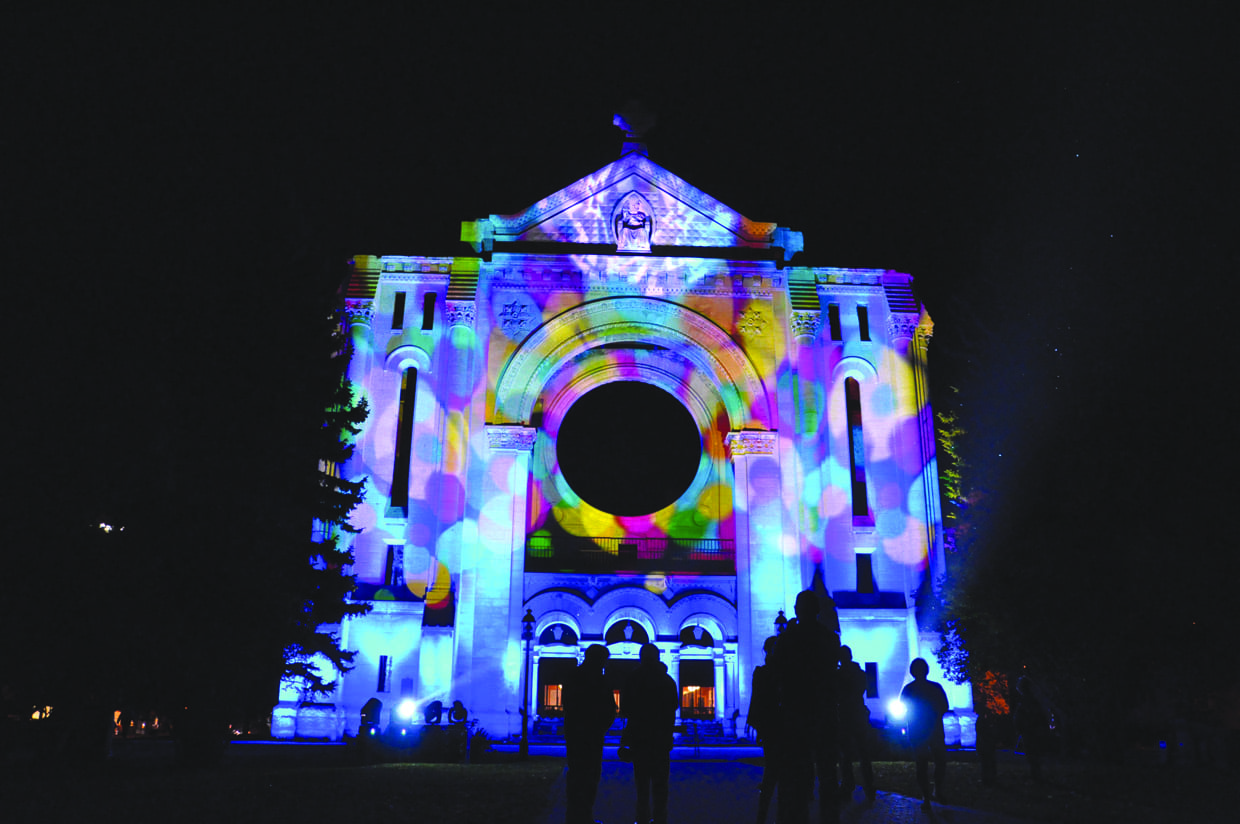The cathedrals of St. Boniface: homage to the resilience of Franco-Manitobans

Entering St. Boniface Cathedral today is a unique experience, as it was built between the previous cathedral’s high stone walls, which remained standing after the building was ravaged by fire in 1968. Franco-Manitoban architect Étienne Gaboury, who designed and decorated the current cathedral, was well aware of the people’s attachment to the largest Western Canadian church, built at the beginning of the 20th century to showcase the strength of the Franco-Manitoban community. Thanks to this bold concept, the faithful still pray on the very spot where six churches have succeeded one another since the first Francophone missionaries arrived at the Red River in 1818. This cathedral is a fundamental piece of Franco-Manitoban heritage and identity. It has withstood every ordeal and has always risen up from its ashes.
To learn more…
A church that reflects today’s tastes, and today’s costs
The current church, constructed of wood, glass and brown patinated steel, is a large building. Its lateral stained-glass windows, designed by Étienne Gaboury himself, renew Christian imagery in clean and elegant forms, and the cathedral’s large interior spaces invite us to spend a moment of quiet reflection. When we approach the threshold by crossing the nave of the previous cathedral, the new church seems small, because the colossal stone wall of the cathedral that burned down in 1968 dominate both the visitor and the new church.
The current cathedral is smaller than the previous one, since the number of faithful no longer justified such an immense place of worship. Although many parishioners wanted to reconstruct the building exactly like the former cathedral, this option would have been ruinously expensive. Since completely demolishing the vestiges of the edifice known as Langevin’s Cathedral, the pride of the community, was inconceivable after the loss of this identity symbol, Gaboury’s proposal was the better compromise.
Preserving the cultural landscape and memory
The long-term conservation of the stone walls of Langevin’s Cathedral, which saved the major features of this Romanesque Revival building, considered to be the finest example of French Romanesque architecture in Manitoba, preserves the cultural landscape of the historic centre of the Franco-Manitoban community. This site is so important that in 1994 the government designated it as one of Manitoba’s provincial heritage sites.
One of the oldest and most significant Catholic cemeteries in Western Canada is located in front of the cathedral. Every year, on November 16, a ceremony commemorating the death of Louis Riel is celebrated in front of his tomb. Jean-Baptiste Lagimodière and his wife Marie-Anne Gaboury, the French Canadians considered to be the founding couple of the Franco-Manitoban community, are buried there, along with a number of bishops and prominent religious men and women. In the summer, the show Sur les traces de Riel is performed there, telling visitors about the rich heritage of St. Boniface and about the contribution of French Canadians and Francophone Métis to the history of Manitoba.
The history of the cathedrals of St. Boniface
Abbé Norbert Provencher, the first missionary to serve the community of Red River, built a small wooden church as soon as he arrived in 1818. The next year, he started the construction of a second, larger church, which was completed in 1825. This was the building project to which Lord Selkirk, the principal shareholder of the Hudson’s Bay Company (HBC), wanted to contribute. At the time, he had just established a Scottish Catholic community in the region. To relax the tense relations between the Anglophones of the HBC and the Francophones of the North West Company, the two great rival corporations in the fur trade, he made the gift of a bell made in England for Provencher’s new church. This bell is now exhibited in St. Boniface Museum.
From 1832 to 1839, Provencher had an imposing church built with two high twin towers, impressing all visitors to St. Boniface. In 1860, however, a fire destroyed this edifice, which had become a cathedral when the diocese of St. Boniface was created in 1847. Bishop Taché, who succeeded Provencher, hastened to replace it with a smaller church, with a single spire, on the same site. In the early 20th century, the Catholic population of St. Boniface, which was essentially Francophone, numbered some 5,000 people. The church could not accommodate all the faithful. Archbishop Langevin then decided to undertake the construction of a larger cathedral, which would be worthy of the seat of the archdiocese of St. Boniface, the hierarchical centre of the Catholic Church in Western Canada, and reflect the confidence of the Franco-Manitoban community at a time when Winnipeg was becoming the metropolis of the West and was welcoming an ever-increasing number of Anglophone residents. The cost exceeded $200,000, a fortune at the time. The loan that had to be taken out to finance the project was to be amortized over a period of 40 years, commencing in 1906. Inaugurated in 1908, this majestic cathedral remained the largest church in the West until it succumbed to fire in 1968. Today, it has been replaced by Gaboury’s cathedral, now firmly planted in the chancel of Langevin’s cathedral.





